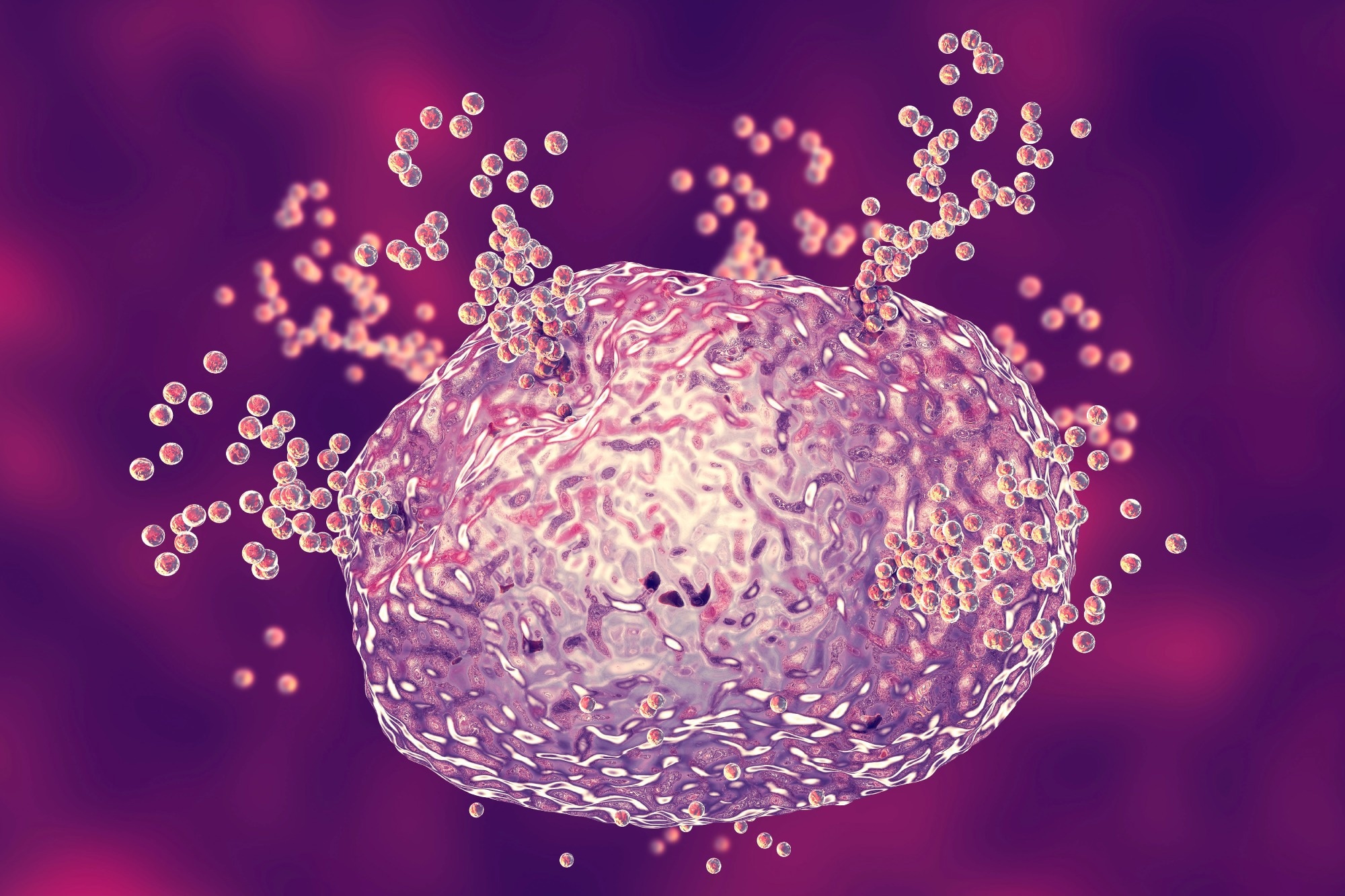In a recent study published in Nature, researchers used a mouse model to show that mast cells and immunoglobulin E (IgE) are the key orchestrators of antigen-specific avoidance, a behavioral adaptation to acute allergic reactions. A topic that remains poorly understood in the framework of type 2 immunity.
 Study: Mast cells link immune sensing to antigen-avoidance behaviour. Image Credit: KaterynaKon/Shutterstock.com
Study: Mast cells link immune sensing to antigen-avoidance behaviour. Image Credit: KaterynaKon/Shutterstock.com
Background
Mast cells are hematopoietic cells residing in barrier tissues, e.g., epithelia of the gastrointestinal (GI) tract, lungs, and skin, best known for their roles in IgE-mediated allergies, affecting up to 40% of the global population.
Upon damage to barrier sites, antigens, toxic (e.g., pathogenic microbes) and innocuous (e.g., peanuts, eggs), enter the body, thereby inducing a type 2 immune response. The adaptive arm of the immune system then generates IgG and IgE antibodies for antigen neutralization.
Mast cells express high-affinity IgE receptors (FcεRI) that bind antigen-specific IgE upon reexposure to the same antigen. Mast cells release proteases, serotonin, histamines, and leukotrienes (signals), which signal avoidance behavior likely causing an allergic reaction.
Contrary to earlier theories, Margie Profet proposed that acute allergic reactions, for instance, sneezing and diarrhea, help rapidly expel allergens. Moreover, these symptoms facilitate the identification of the allergic source, enabling future avoidance.
Evidence for antigen-avoidance behavior has broadened over time, but the role of mast cells in it remains largely unknown. The overall physiological functions of mast cells remain an enigma.
About the study
In the present study, researchers immunized genetically mast-cell-deficient BALB/c Cpa3Cre/+ mice with ovalbumin (OVA) in complex with adjuvant aluminum hydroxide or alum intraperitoneally on days zero and 14, alongside wild-type BALB/c Cpa3+/+ mice (controls). These mice subsequently induced robust OVA-specific IgE response.
On day 20, they subjected mice to a drink avoidance test, a behavioral assay adapted from Cara et al., which ascertained their preference for egg white water (OVA source) over plain water. The team continuously recorded the drinking preferences of each test animal.
To prevent mice from other environmental influences and uninterrupted assessment of their natural behavior, the team housed 13 to 16 mice in IntelliCages throughout the study. Each cage gave mice access to eight drinking bottles, four filled with egg white matter and the other four containing plain water.
Furthermore, the team subjected wild-type BALB/c mice to either the two-bottle ‘avoidance’ or OVA gavage ‘non-avoidance’ test for up to 16 days.
It helped them assess the immunological consequences of avoidance and non-avoidance behavior on the GI tract, especially the stomach and small intestine.
Results
The researchers noted that while non-immunized mice preferred egg white water over plain water, OVA-immunized mice avoided egg white water in a mast cell-dependent manner.
In addition, after receiving a T helper 2 (Th2)- and mast-cell-promoting cytokine cocktail two days post-immunization, these mice mounted an enhanced avoidance response; however, this response remained mast-cell-dependent.
In the two-bottle test, researchers found that mast-cell-deficient mice preferred egg-white water while wild-type mice avoided it. When forced to ingest OVA by gavage, these wild-type mice developed diarrhea, indicating induction of inflammatory and immunological processes under non-avoidance conditions.
The study results reinstated that GI epithelium forms a barrier that controls nutrient absorption and prevents the entry of microbes into the gut. Accordingly, only tissue-resident stomach and small-intestinal mast cells but not esophagus or colon mast cells sensed oral antigen exposure.
Another notable observation was that immune gene induction was lower in mast-cell-deficient mice, suggesting immune activation might not be completely mast-cell dependent.
In addition, mast cells sensed the presence of protein antigens and signaled this information to the central nervous system.
Conclusion
In mammals, mast cells and IgE have remained conserved for millions of years to provide significant evolutionary advantages. However, it does not resolve the debate over the
immunological purpose of allergic responses induced by these immunological components. In some instances, mast cells and IgE even mediate protective Th2 responses.
Other advantageous mast cells and IgE functions have been observed during parasitic infections. However, studies have also shown that other immune cells, like eosinophils, render mast cell function redundant even during parasitic infections.
Given the intricacies of the physiological functions of mast cells during immunological protection, their role in antigen-avoidance behavior becomes much more intriguing.
In antigen-specific avoidance, the non-redundant functional role of mast cells represents an evolutionary advantage of preventing repeated immune responses to allergens, which often are non-infectious.
Mostly, allergens are innocuous and non-toxic, and with intact barriers, they also remain non-immunogenic. However, when barrier integrity is harmed, for instance, in the gut, lung, or skin by irritants, such as detergents, allergens can elicit type 2 responses in the GI tract, lung, or skin, thereby enhancing the production of antigen-specific IgE.
In case of exposure to toxins and innocuous substances, avoidance behavior prevents repeated contact, which induces local and systemic immunity and subsequent inflammation.
The current study identified mast cells as distinct from other immune cells despite their bone marrow origin. They served as sensor cells that linked antigen recognition elicited by type 2 immunity to behavioral adaptations; here, antigen-specific avoidance, thus, doing a non-redundant, novel function.